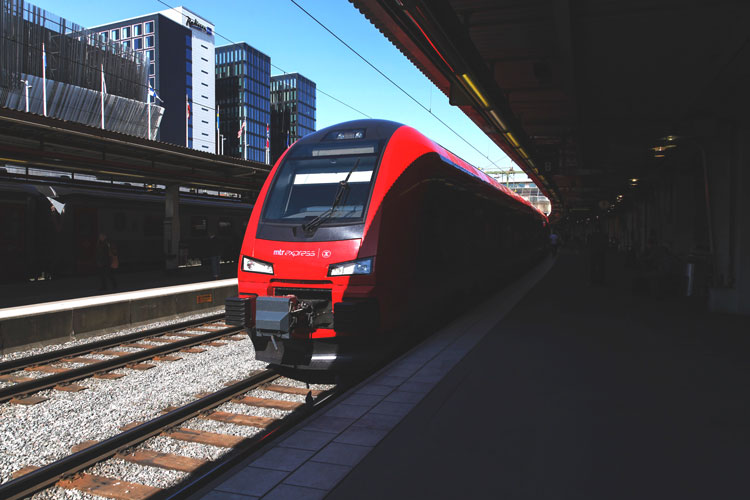Why accurate data is key to solving today’s challenges in passenger information
- Like
- Digg
- Del
- Tumblr
- VKontakte
- Buffer
- Love This
- Odnoklassniki
- Meneame
- Blogger
- Amazon
- Yahoo Mail
- Gmail
- AOL
- Newsvine
- HackerNews
- Evernote
- MySpace
- Mail.ru
- Viadeo
- Line
- Comments
- Yummly
- SMS
- Viber
- Telegram
- Subscribe
- Skype
- Facebook Messenger
- Kakao
- LiveJournal
- Yammer
- Edgar
- Fintel
- Mix
- Instapaper
- Copy Link
Posted: 21 March 2019 | Oliver Bratton - MTR Corporation | 1 comment
Oliver Bratton, Operations Director-European Business, MTR Corporation details MTR’s commitment to improving data-sharing, and therefore traffic management, in order to ensure rail can play its part in the future of mobility.


The railway industry across the world is often criticised for how it deals with passenger information during disruption, and frequently that criticism is justified. The industry struggles to know what service it intends to run during and following disruption and tries to broadcast incomplete information to a homogenous group of passengers; a process that almost guarantees that no passenger gets the exact information or advice they need to complete a journey. This reflects two distinct problems in the industry.
Firstly, it is extremely difficult to predict how incidents will develop. Whether an incident will last for six, 16 or 60 minutes is often a matter of guess work at the formative stages of understanding how to address an incident. This kind of uncertainty is unacceptable for passengers for whom a predictable destination arrival time is of paramount importance.
Secondly, the reality is that the industry does not know who is travelling on the system at any moment in time, or where they are going. There are some exceptions to this, as those travelling on advance tickets who have booked through the company’s own retailing system will be known to that company. Most others, however, such as the millions commuting to London in peak times, are an anonymous, aggregated statistic.
Linking the passenger with the journey
Passenger information should be a relationship between the company and the individual user. The UK rail industry has been slow to create this relationship and to use it for the passenger’s benefit. Other railways are moving much more quickly to link the passenger, journey and train together. MTR Express, the open access operator between Gothenburg and Stockholm, was designed to be an e-ticket railway only from its commencement four years ago. This has meant that MTR has been able to offer personalised information flow to passengers, including information on delays, availability of refunds and the guarantee of a seat on journeys. Whilst we have not yet solved the difficulties of being able to tell passengers how long disruption will last, the ability to maintain contact with individuals and inform them of the impact on their journeys has enabled us to increase patronage against a declining air travel market on the same route.
This focus on a digital relationship between the passenger and the operator has been recognised with MTR Express being placed second in the Swedish Innovation Index (following IKEA). This strong showing by a transport company demonstrates what is possible when innovation is used to unlock the potential of digital.
Data accuracy is imperative for success in MaaS and smart cities
MTR Nordic, which runs the Pendeltåg network in Sweden as well as the MTR Express, has used this knowledge and expertise to further develop ‘MyHeadsapp’, a journey planner that works across all transport modes in Stockholm but is specifically designed for commuters. It is highly configurable by the user and helps advise users when disruption will affect their journey.
Across Europe, MTR has invested millions of pounds in improved operational planning and control systems. Its businesses use some of the most powerful tools available for running railways, reflecting the importance the company places on ensuring that the data that describes the position of stock and crew, and the structure of the timetable to be run (particularly in disruption), is kept complete. Without this data integrity, there is very little chance of being able to publish correct and consistent information to rail users. A common reason for disruptive incidents failing to be recovered is when the control team can no longer keep track of the displaced crew and stock resources.
At the heart of both Mobility-as-a-Service (MaaS) and smart cities is the requirement for a consistent data structure representing the user journey and the available travel modes at any moment in time. This is inherently easier in smaller geographies with fewer routing options, particularly when a user requires real-time information to provide an alternative route during disruption, and where a small number of agencies provide public transport. In Hong Kong, for example, the use of Octopus ticketing and digital apps makes travelling simple across multiple transport modes. For MaaS and smart cities to work effectively in the UK, train operators have to be able to describe the train service they are providing at any moment in time, who is on those trains, and what journeys passengers are making. In short, the UK rail industry needs to codify in data what is happening to passengers, trains and crew continuously, even when there is disruption. Once it can do this, the data can then be used to integrate with other transport modes and software services.
MTR’s work on improving the digital experience of the passenger in Sweden, and its investment in control systems to keep train service information intact, show its commitment to enabling improved data-sharing in order for rail to play its part in future mobility. This is not something that a single operator can solve by itself, but neither can our users wait for the industry to align itself with all the different needs of operators. MTR Express succeeded because it was not encumbered by legacy systems; overcoming the inertia these cause is a significant problem. If there were a better understanding of the potential of a digital future and the benefits it can bring passengers through improved connectivity, there might be greater momentum to unlock the potential of rail being part of that MaaS landscape.
Biography


Related topics
Passenger Experience, Traffic Management, Travel & Passenger Information
Related organisations
MTR Corporation
Related people
Oliver Bratton









The relationship is not just between the (transport) company and the user. The accurate data needs to be freely available/open for other apps to use too.